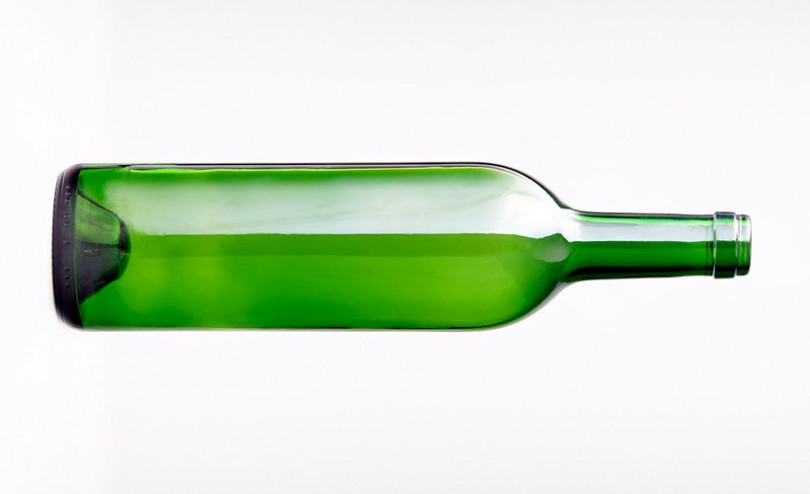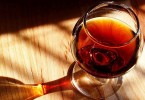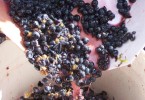Which are the wine bottles and which colour do they have?
The bottle is a glass container to preserve wine. The advised colour is dark green or brown, because these colours can filter the light. In fact it is important to shield wine from the light, in order to avoid to activate chemical processes that can alter the quality of the wine itself. The direct exposure to light, in fact, increases the oxidation process to spread the free radicals.
The colour of the wine, especially the white one, lost the straw yellow colour to become amber. The light, not only affects the appearance of the wine, but also the taste. The traditional musty smell of the bottled wines becomes a garlic flavour. Thus, the choice of the bottle is fundamental to guarantee the quality of the wine. In the last years, by the way, it is spreading the use of transparent bottles for the white and sparkling wines as well, without taking care of such an important element.
Characteristics of the wine bottles
The most used wine bottle is the Bordeaux one. The traditional size for sale is 0,750. The parts of a bottle are: finish, neck, shoulders, body and punt. In the past, the finish was used to tied a thread on the cork stoppers when the modern bottling systems don’t exist. The neck is on average long and narrow to pour out the wine. The body contains the liquid.
The bottom has to be well balanced to keep the wine vertically; for this reason, at the bottom there is a punt that allows the sommelier to better pour the wine.
The thickness of the glass, the size and the structure of the bottle aren’t universal. In fact, an ageing red wine needs a thicker bottle than a white wine that will be drunk in ½ years. A Spumante wine, then, is bottled in a bottle with a thicker glass than a still wine, in order to face the pressure of the bubbles. Thus, it is clear now that there is a bottle for each type of wine for sale.
The thickness of the glass, the size and the structure of the bottle aren’t universal. In fact, an ageing red wine needs a thicker bottle than a white wine that will be drunk in ½ years. A Spumante wine, then, is bottled in a bottle with a thicker glass than a still wine, in order to face the pressure of the bubbles. Thus, it is clear now that there is a bottle for each type of wine for sale.
Wine bottles for sale: different shapes
The standard shape is the Bordeaux wine. Nevertheless, there are many other shapes strictly tied with the tradition of the land that produces that kind of wine.
Each shape reminds the wine created for it:
Each shape reminds the wine created for it:
– Burgundy: typical bottle for red wines produced in the Langhe;
– Bordeaux: it is related to the area of Bordeaux wine, the great French aged wine;
– Amphora: used for Verdicchio;
– Marsala bottle: typical bottle for Marsala wine;
– Rhône: it hasn’t shoulders and the body starts lower than the Bordeaux;
– Champagne: it is perfect to bottle Champagne and Spumante wines. The bottom is large cause it has to face the weight of the bottle realized with thick glass to maintain the pressure in the bottle;
– Mosel & Alsace: it is tall and slim perfect for white wines;
– Fiasco: also called Chianti as it regards the tradition to cane the bottles to protect them during the journey on the wagons.
– Bordeaux: it is related to the area of Bordeaux wine, the great French aged wine;
– Amphora: used for Verdicchio;
– Marsala bottle: typical bottle for Marsala wine;
– Rhône: it hasn’t shoulders and the body starts lower than the Bordeaux;
– Champagne: it is perfect to bottle Champagne and Spumante wines. The bottom is large cause it has to face the weight of the bottle realized with thick glass to maintain the pressure in the bottle;
– Mosel & Alsace: it is tall and slim perfect for white wines;
– Fiasco: also called Chianti as it regards the tradition to cane the bottles to protect them during the journey on the wagons.
Size of the wine bottles: each one has its own name

The wine bottles can vary not only for the shape but also for the size. Each size has its specific name; according to the litre we can distinguish:
– Fillette – 0.375 l
– Bouteille – 0.75 l
– Magnum – 1.5 l
– Jeroboam – 3 l
– Rehoboam – 4.5 l
– Methuselah – 6 l
– Shalmaneser – 9 l
– Balthazar – 12 l
– Nebuchadnezzar – 15 l
– Melchior – 18 l
– Solomon – 20 l
– Primat – 27 l
– Melchizedek – 30 l
– Fillette – 0.375 l
– Bouteille – 0.75 l
– Magnum – 1.5 l
– Jeroboam – 3 l
– Rehoboam – 4.5 l
– Methuselah – 6 l
– Shalmaneser – 9 l
– Balthazar – 12 l
– Nebuchadnezzar – 15 l
– Melchior – 18 l
– Solomon – 20 l
– Primat – 27 l
– Melchizedek – 30 l
Corking the wine bottles
Wine bottles are closed with corks or plastic stoppers. They don’t have the same shape and the same quality; in fact the cork stoppers are better and they are used to tap precious or long aging wines. The tops with two cork disks at the end and a core of chipboard are cheaper and are suitable for wines that will be drunk in 2-5 years. The stoppers completely made of chipboard will tap industrial wines. Silicone is a futuristic material, which preserve wine from the cork taint.
Imagines’ source: wikimedia.org







